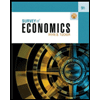BU204_01_Bryant_Stephanie_Unit 9 Assignment
docx
keyboard_arrow_up
School
Purdue Global University *
*We aren’t endorsed by this school
Course
204
Subject
Economics
Date
Jun 26, 2024
Type
docx
Pages
5
Uploaded by MagistrateTurtle17264
Your preview ends here
Eager to read complete document? Join bartleby learn and gain access to the full version
- Access to all documents
- Unlimited textbook solutions
- 24/7 expert homework help
Recommended textbooks for you





Survey of Economics (MindTap Course List)
Economics
ISBN:9781305260948
Author:Irvin B. Tucker
Publisher:Cengage Learning

Recommended textbooks for you




 Survey of Economics (MindTap Course List)EconomicsISBN:9781305260948Author:Irvin B. TuckerPublisher:Cengage Learning
Survey of Economics (MindTap Course List)EconomicsISBN:9781305260948Author:Irvin B. TuckerPublisher:Cengage Learning





Survey of Economics (MindTap Course List)
Economics
ISBN:9781305260948
Author:Irvin B. Tucker
Publisher:Cengage Learning
